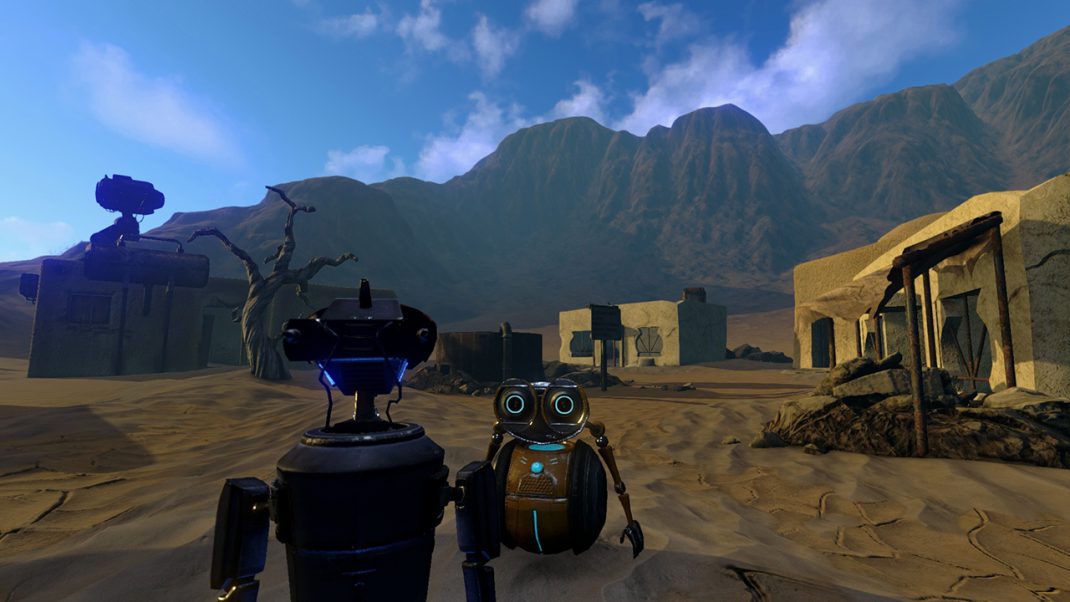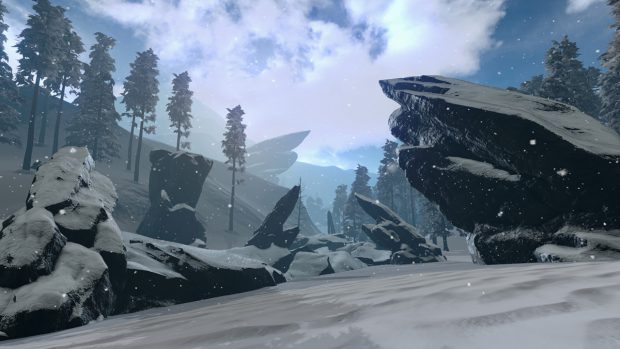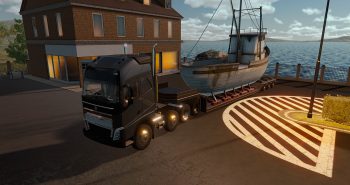The current landscape of gaming has made it much easier for independent game makers to get their products made and published. Kickstarter, Indigogo, and Steam Greenlight have opened the gates for many game makers to get their ideas made, and into the hands of the public. However, not all games are made equal. For every great game that comes out, there are usually five to six really, really bad games that came out with it. One such game to get made this way is Phoning Home, by Ion Lands. Phoning Home made its way through the Steam Greenlight community, and into my hands prior to its official release. Is Phoning Home one of the good games to make it to market, or something to avoid and forget about all together? Let’s take a closer look at Phoning Home by Ion Lands.
Story
In Phoning Home you play as a droid named ION, and begin the game by crash landing your ship on an unknown planet. Your ship’s AI immediately sets you out to collect materials and craft parts to repair the communications array to contact your home planet for extraction. As you explore the alien planet, you soon discover remnants of an older alien civilization, and another spacecraft, who is missing its own exploration unit, named ANI. ION quickly realizes that escape from this planet is impossible, without ANI’s aide and sets out to find her. ANI is discovered, but is also a bit mad, but is absolutely essential in your quest to escape. Together, you and ANI begin searching for ways to get off the planet, while also exploring the ancient civilization and discovering what other resources are available on the planet.
The story is pretty generic, as these types of stories go, but still will keep you interested throughout the entire game. The most interesting aspect of the story is the interdependence between ION and ANI. ANI is extremely dependent on ION to move around the landscape, but ION cannot make it off the planet without ANI’s systems, so what develops is a story that really centers around two characters that are vital to each other for survival. The story of Phoning Home went a lot deeper than I was expecting it to.
Game Play
You begin the game by completing some rudimentary quests for your ship’s AI unit, trying to get certain systems back online. ION moves around the open world very well, with a jump pack and a sprint function to help you get around. However, using the jump pack burns fuel faster, and using the sprint function will drain your battery. This makes gathering of resources and crafting vital to progressing through Phoning Home.
As you explore the planet, you will discover different resources that you can use in crafting. Resources are initially unknown and not on the map, until you discover them. Once you have located and gathered a particular resource, that resource will now show up on your HUD and makes finding more of the same resources easier. ION can only hold a certain amount of each resource, so gathering maximum amounts and constantly crafting fuel and batteries is a great way to make sure you can get around whenever you need to. Crafting is also done very simply, yet still felt satisfying. In the crafting menu, you will see a list of all the objects that you can craft, and the materials that are needed to craft that object. Once you have all the materials, you simply click on the item you want to craft and it is created and placed in your inventory. Some items require multiple parts to create, so you will need to gather a larger batch of resources.
These items you can craft also include upgrades to ION, including weapons, teleporters, or magnetics that help you move ANI around. Each upgrade changes the way the game is played and are realized at certain points of the game. Your ship’s AI will contact you when a new upgrade or item is now craftable, and all you need to do then is locate the right resources to craft and unlock it. Crafting these upgrades and items are vital to the overall game play of Phoning Home because of the constant shift and threat of the terrain. ION will take damage from falls, creatures, and even the weather. Repair kits, batteries, and fuel are in constant need and so you will spend most of your time gathering and crafting, as you explore your planet.
If crafting and resource gathering is half of the game here, then the other half is survival and solving puzzles. ION is only outfitted with a pipe as a weapon in the beginning, so combat isn’t an option. Large rock creatures will just crush you with boulders if you get to close, so you best learn to keep your distance. Later, you will get some photon blasters and other weapons, but the option to hide and wait is usually the better option. You will also have to deal with ANI, in what becomes long escort mission. ANI has her own health bars and abilities, so you need to keep her alive at all costs. ANI is also not outfitted with the same gear you are, so cannot fly or create her own teleport portals. That’s all you, bud. You will have to lift her over rocks, create portals to help her climb, or use your magnetics to get her to keep up with you as you run away from a very large rock creature using your head for target practice.
Aesthetics
Usually, indie games go with a drastically different aesthetic or really leave one aspect of the design short to save money. Phoning Home’s aesthetic is impressive and really works well with the game. ION does look a little too much like Wall-E for my taste, I would have liked to have seen something that really could stand out as being unique to Phoning Home. The graphics aren’t awe inspiring but still do a hell of a job making the alien planet interesting to explore. The planet has many different climates to explore and the planet looks just close enough to Earth to allow you to understand what it is you are looking at, but different enough to know that you are on an alien world.
The sound design, music, and voice acting are done extremely well. Everything about Phoning Home feels much more polished than your average indie game, but the voice acting and music are easily the highlights of the aesthetic. The voice acting was really well done, with just enough emotion to keep you invested in the story, but not too much to stop sounding like it would come from an A.I. The music fits the feeling of the game, of being lost on a strange planet far from home. It’s immediately the one area that you can just feel that the developers put a huge emphasis on and it comes off almost perfect. The game feels very atmospheric thanks to the soundtrack.
Final Thoughts
Phoning Home is one of those good games that really shows what Steam Greenlight is really capable of. Solid storytelling, decent graphics, and a great aesthetic (minus the Wall-E look) makes Phoning Home a must play for those that are looking for a game about gathering resources and exploration. Phoning Home officially released on Steam on February 7.
Phoning Home Review Score
[mks_icon icon=”fa-star” color=”#ff3a3a” type=”fa”][mks_icon icon=”fa-star” color=”#ff3a3a” type=”fa”][mks_icon icon=”fa-star” color=”#ff3a3a” type=”fa”][mks_icon icon=”fa-star-o” color=”#ff3a3a” type=”fa”][mks_icon icon=”fa-star-o” color=”#ff3a3a” type=”fa”] (3 out of 5 Stars)







